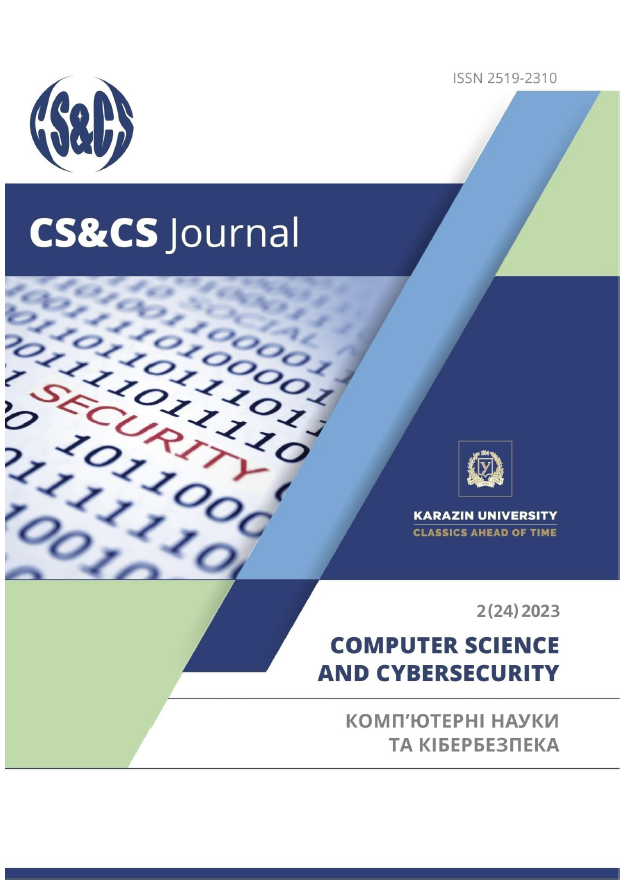Проблемні питання технології машинного навчання в правоохоронній діяльності
Анотація
Правоохоронні органи все частіше використовують технології прогнозування та автоматизації, де основною технологією часто є застосування методів машинного навчання (ML). У статті розглядається проблема підзвітності та відповідальності правоохоронних органів і посадових осіб в контексті застосування моделей машинного навчання ML. Автори вказують, що підзвітність є ключовим елементом демократичної правоохоронної діяльності, але використання прогнозного програмного забезпечення може створювати проблеми у забезпеченні цієї підзвітності. Стаття обговорює, що застосування ML може призвести до завуалювання відповідальності та ускладнення підзвітності у «мультиагентних структурах», що об’єднують людей і обчислювальні інструменти. Особлива увагу приділяється непрозорості алгоритмів прикладних прогнозних моделей та автоматизованих систем прийняття рішень, що стає джерелом непорозумінь і обережності щодо їх використання. Автори висувають питання щодо того, як можна забезпечити ефективний контроль та повну звітність, коли ключові компоненти процесу прийняття рішень залишаються невідомими для широкої громадськості, посадових осіб та навіть розробників моделей. У статті стверджується, що важливі питання, пов’язані з моделями рішень ML, можуть бути розглянуті без детального знання алгоритму навчання, що дає змогу експертам правоохоронної діяльності, які не займаються ML, вивчати їх у формі інтелектуального контролю. Експерти, які не займаються ML, можуть і повинні переглядати навчені моделі ML. Автори надають «набір інструментів» в формі запитань про три елементи моделі прийняття рішень, які можуть бути якісно досліджені експертами, які не є спеціалістами з машинного навчання: навчальні дані, навчальна мета та антиципаційна оцінка результатів. Такий підхід розширює можливості цих експертів у вигляді об’єктивної оцінки використання моделей ML у правоохоронних завданнях. Основна ідея полягає в тому, що навіть без глибоких технічних знань експерти можуть аналізувати та переглядати моделі ML, розкриваючи їхню ефективність через призму власного досвіду. Даний підхід сприяє порозумінню використання технологій машинного навчання в рамках правоохоронної діяльності, розширюючи потенціал відповідних експертів, не пов’язаних з ML.
Завантаження
Посилання
Halterlein, J. and Ostermeier, L. (2018). ‘Special Issue: Predictive Security Technologies’. European Journal for Security Research 3(2): 91–94.DOI: https://doi.org/10.1007/s41125-018-0034-z
Hughes, D. (2017). ‘Robot Investigators ‘Could Be Used to Examine Documents in Criminal Cases’. The Independent (14 December 2017). https://www.independent.co.uk (accessed 20 November 2018).
Bennett Moses, L. and Chan, J. (2016). ‘Algorithmic Prediction in Policing: Assumptions, Evaluation, and Accountability’. Policing and Society 28 (7): 1–17.DOI: https://doi.org/10.1080/10439463.2016.1253695
Ratcliffe, J. H. (2016). Intelligence-Led Policing. Abingdon, Oxon; New York: Routledge. DOI: https://doi.org/10.4324/9781315717579
Innes, M. and Sheptycki, J. W. (2004). ‘From Detection to Disruption: Intelligence and the Changing Logic of Police Crime Control in the United Kingdom’. International Criminal Justice Review 14(1): 1–24.DOI: https://doi.org/10.1177/105756770401400101
Goldstein, J. (1960). ‘Police Discretion Not to Invoke the Criminal Process: Low-Visibility Decisions in the Administration of Justice’. The Yale Law Journal 69(4): 543–594.
Burrell, J. (2016). ‘How the Machine ‘Thinks’: Understanding Opacity in Machine Learning Algorithms’. Big Data & Society 3(1): 1–12.DOI: https://doi.org/10.1177/2053951715622512
Mittelstadt, B. D., Allo, P., Taddeo, M., Wachter, S. and Floridi, L. (2016). ‘The Ethics of Algorithms: Mapping the Debate’. Big Data & Society 3(2): 1–21.DOI: https://doi.org/10.1177/2053951716679679
Strukov V.M., Uzlov D.Yu. et al. Information Technologies in Law Enforcement. Part 1. High-Tech Trends in Law
Enforcement of Foreign Countries. Kharkiv: LLC 'DISA PLUS', 2020. [In Ukrainian]
Hughes, D. (2017). ‘Robot Investigators ‘Could Be Used to Examine Documents in Criminal Cases’. The Independent (14 December 2017). https://www.independent.co.uk (accessed 20 November 2018).
Mittelstadt, B. D., Allo, P., Taddeo, M., Wachter, S. and Floridi, L. (2016). ‘The Ethics of Algorithms: Mapping the Debate’. Big Data & Society 3(2): 1–21.DOI: https://doi.org/10.1177/2053951716679679
Norwegian Board of Technology (2018). Artificial Intelligence: Opportunities, Challenges and a Plan for Norway. Oslo: Norwegian Board of Technology. DOI: https://doi.org/10.5617/nmi.9950
Lum, K. and Isaac, W. (2016). ‘To Predict and Serve?’. Significance 13(5): 14–19.DOI: https://doi.org/10.1111/j.1740-9713.2016.00960.x
Mohler, G. O., Short, M. B., Malinowski, S. et al. (2015). ‘Randomized Controlled Field Trials of Predictive Policing’. Journal of the American Statistical Association 110(512): 1399–1411.DOI: https://doi.org/10.1080/01621459.2015.1077710
Zhang, Lemoine, B. and Mitchell, M. (2018). Mitigating Unwanted Biases with Adversarial Learning. Proceedings of the 2018 AAAI/ACM Conference on AI, Ethics, and Society, ACM. pp. 335–340.DOI: https://doi.org/10.1145/3278721.3278779
Wu, X. and Zhang, X. (2016). ‘Responses to Critiques on Machine Learning of Criminality Perceptions’ (Addendum of arXiv: 1611.04135). ArXiv: 1611.04135 [Cs]. http://arxiv.org/abs/1611.04135 (accessed 8 January 2019).
Beck, C. and McCue, C. (2009). ‘Predictive Policing: What Can we Learn from Wal-Mart and Amazon about Fighting Crime in a Recession?’. Police Chief 76 (11): 18–24
Sklansky, D. A. (2008). Democracy and the Police. Stanford, CA: Stanford University Press. DOI: https://doi.org/10.1515/9780804763226
Toby Segaran (2008) Programming Collective Intelligence. Published by O’Reilly Media Inc., ISBN-10:0-596-52932-5. https://archive.org/details/programmingcolle00sega_0/page/n7/mode/2up


